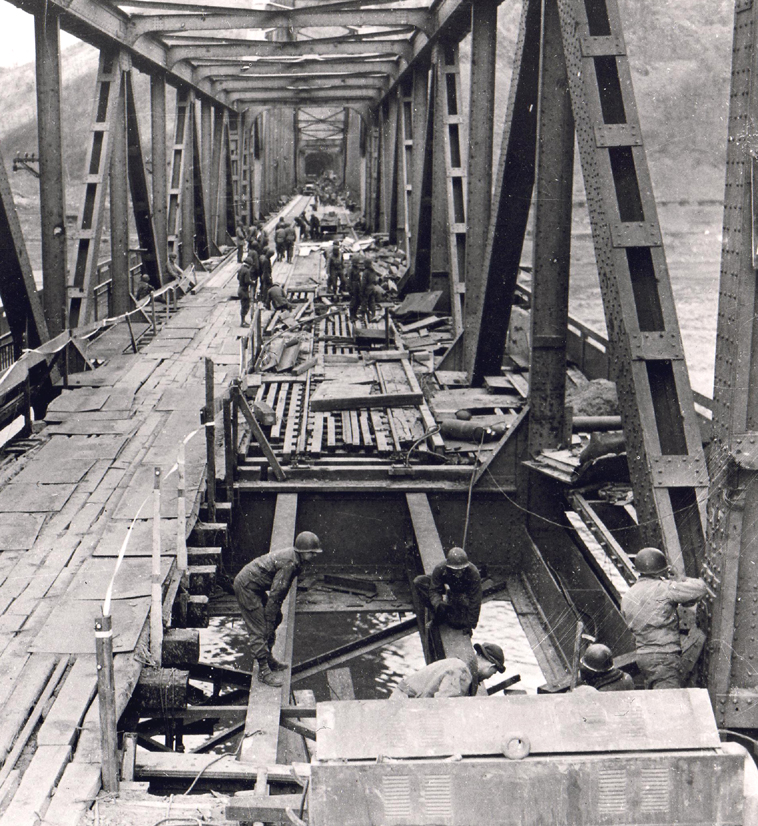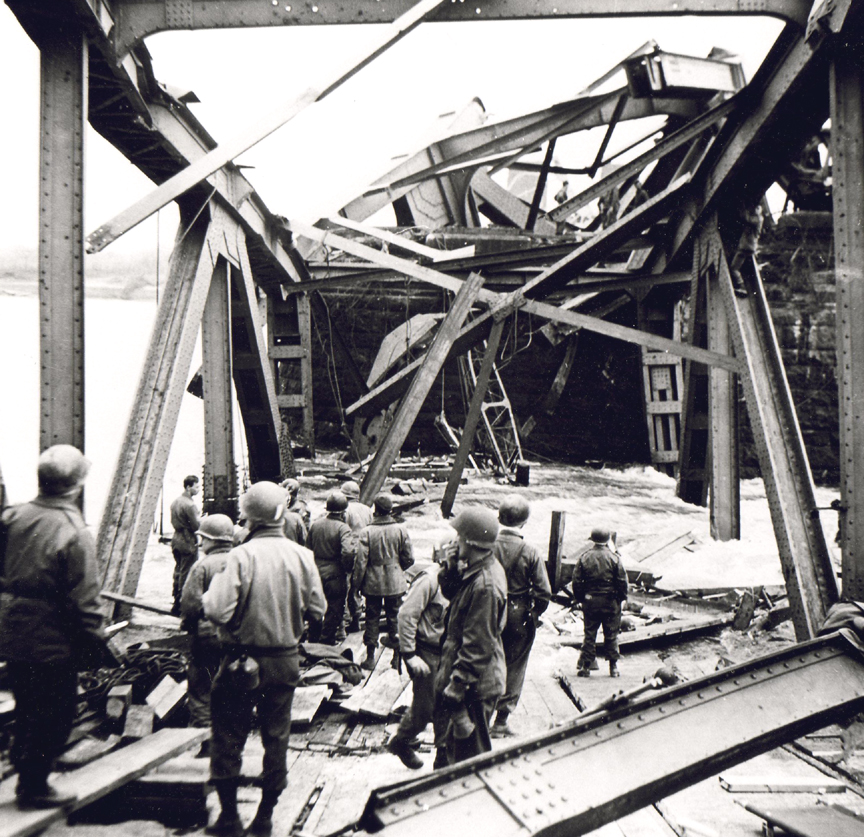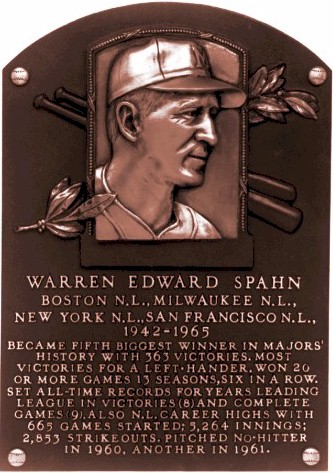 |
|
Warren Spahn as a pitcher for the Milwaukee Braves.
©Courtesy of the National Baseball Hall of Fame and Museum |
|
Warren Spahn’s credentials in baseball are well known: most victories by a left-handed pitcher (363); thirteen years of twenty or more wins in twenty-one year as a major leaguer; Cy Young Award (1957); appearances in fourteen All-Star games; two no-hitters; a 4-3 record in three World Series; Hall of Fame (1973)—and much more. Spahn also was an Army engineer.
Less well known than his professional athletic feats, but also impressive, is Spahn’s record in World War II. Drafted in 1942 soon after making his major league debut that year with the Boston Braves, Private Warren E. Spahn was assigned to the 276th Engineer Combat Battalion. While in training at Camp Gruber, Oklahoma, he pitched the battalion’s team to the post championship. In Europe, at the Battle of the Bulge, he earned the Bronze Star. He likely became the only major league player to receive a battlefield commission.
The 276th played a conspicuous role at the Ludendorff Bridge at Remagen, Germany. The retreating Germans failed to destroy this vital Rhine River bridge, allowing the Americans to pour across it in great numbers and drive into the heart of Germany. Enemy artillery severely damaged the bridge, and the 276th was engaged in making repairs under fire. A combination of German shelling, vibrations from American artillery, and heavy tank traffic caused the collapse of the bridge 17 March 1945, killing several officers and men of the 276th. Lieutenant Spahn was not among the casualties of the collapse, but while at Remagen he was wounded in the foot by shrapnel (“only a scratch,” according to Spahn), earning him the Purple Heart. The 276th received a Presidential Unit Citation for its actions at Remagen.
 |
|
 |
| Engineers of the 276th Engineer Combat Battalion put down rails across the recently captured Ludendorff railroad bridge connecting the German Rhine River towns of Remagen and Erpel, 1945. |
|
Four hours after the picture at left was taken, the bridge collapsed, killing dozens of soldiers from the 276th. |
| |
 |
| |
Warren E. Spahn National Baseball Hall of Fame plaque.
©Courtesy of the National Baseball
Hall of Fame and Museum |
With the Allied victory in Europe, the 276th resumed playing baseball, with their stellar left-hander pitching them to the XIX Corps championship. When his service was lengthened by six months because he accepted a commission as an engineer officer, Spahn found time to pitch for an engineer group, at one stretch allowing only one run and nine hits while striking out seventy-three batters. Spahn received a discharge from the Army in April 1946. He rejoined the Boston club in time to post an 8-5 season. Over the next several years his spectacular achievements on the mound assured him of a prominent place among baseball’s superstars. When he retired in 1965 he was major league baseball’s oldest active player.
Although military service cost Spahn nearly four years of his playing career, he looked back at his wartime experiences in a positive light:
“After what I went through overseas, I never thought of anything I was told to do in baseball as hard work. You get over feeling like that when you spend days on end sleeping in frozen tank tracks in enemy threatened territory. The Army taught me something about challenges and about what’s important and what isn’t. Everything I tackle in baseball and in life I take as a challenge rather than work.”
* * *
April 2005